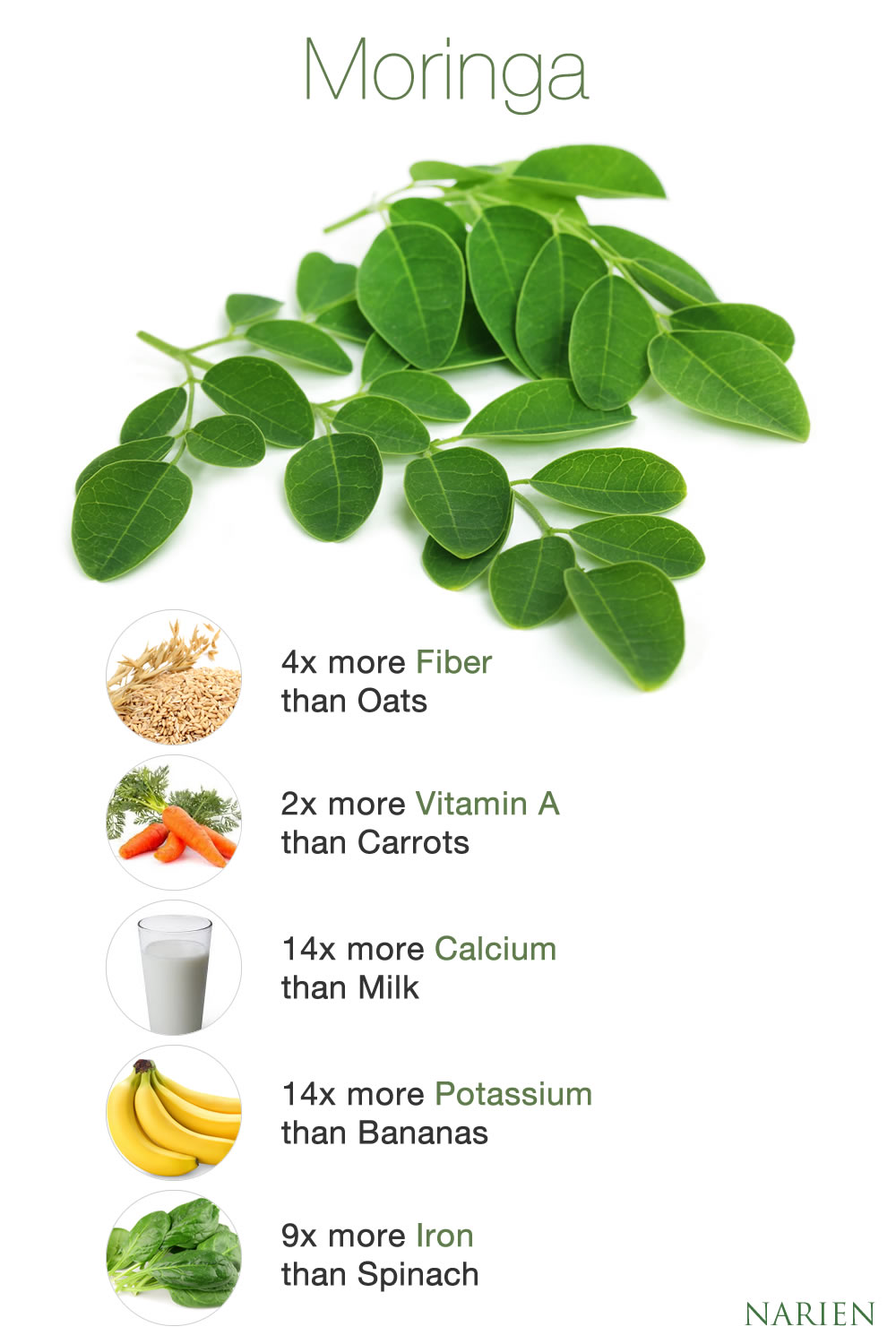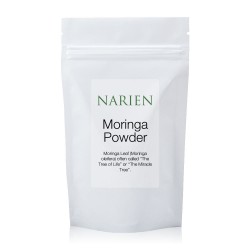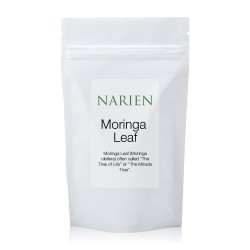- Brewing & Distilling
- Caffeine Free
- Culinary
- Fair Trade
- Medicinal
- Organic
- Sprouting Seeds
- Tisane
- Viable Seeds
- Wildcrafted
Free Shipping $69+
Halloween Discount 25%
Moringa
The moringa plant (Moringa Oleifera) is a small, yet fast-growing tropical tree that has been used in folk medicine for centuries.
Moringa leaves are edible and has been used as a nutritious food and in traditional medicine. Moringa leaves, seeds, and crushed derivatives have been recently used for its "superfood", nutritious, and healthy benefits.

Moringa Documentary - Moringa Oleifera

The moringa plant has several bioactive components that are particularly valuable when consumed. The moringa is used throughout the world, especially in tropical regions where the tree tends to thrive. The moringa plant is not native to the United States, and may not fare well in its temperate regions. The only state that it can possibly survive is the Island of Hawaii and parts of Florida.
There are more than a dozen different species of the moringa plants, with the majority being indigenous to northern India, southwestern Madagascar, Ethiopia and Somalia, Angola, the Horn of Africa, and Kenya.
Moringa's Use in Folk Medicine Has Inspired it's Resurgence
The moringa plant has been used for a myriad of reasons, including food, medicine, and building materials in India. It is a particularly giving tree, as almost every part of the tree can be used, with most of the medicinal benefits being stored in its roots, leaves, seeds, flowers, and resin. Part of the Ayurvedic tradition, the moringa tree has been used as a part Middle Eastern healing systems. For ayurvedic medicine, the leaves and the seeds are most used, with pulverized parts used as a powder supplement.
Phytology of Moringa Oleifera
The moringa plant and its benefits have been spread throughout southeast Asia, northeast and southwest Africa, the Philippines, and Madagascar - and now the United States. Many retailers are noticing the particular health advantages of the moringa plant, cultivating it for consumption and as a supplement.
The scientific name of Miranda comes from the Tamil language, a language mostly spoken in northeast Sri Lanka and South India. "Murungai" is where moringa originates from, with the word meaning "twisted pod." The oleifera is a Latin name that means "oil bearing," due to the seeds being particularly oily. In Ayurveda medicine, the moringa tree is propped up as a shobhanjana and mochaka plant. These phrases mean "very auspicious tree" and a tree that "helps cure diseases."
The moringa plant is drought tolerant and thrives in subtropical, semi-arid regions. It is one of the more commonly cultivated plants in the world, as it is grown in Pakistan, India, and Africa. It is also planted in other countries like Central and South America. South America is particularly advantageous for moringa plant cultivation due to its year-round warm weather, as well as its high market potential.
In folklore and history, it is believed that the moringa plant came from northern India and has been used in Ayurvedic and traditional medicine for more than 5000 years. There have even been accounts of the Romans and Greeks using it as building material and for their medicinal properties. Considered a panacea in many types of folk medicine, this miracle tree has been used extensively in holistic medicine.
Understanding Moringa in Ayurveda medicine
Ayurveda is a type of medicine that has roots in India. A form of alternative medicine, Ayurveda focuses on general wellness as well as medical integrity. The types of Ayurveda treatment and therapies have evolved throughout history, with moringa and other plants being a mainstay. Humoral balance is emphasized, with plants like moringa attempting to bring stability to the person's health. In Ayurveda, the vatta, kapha, and pitta are important elements or doshas that need balance for optimum well-being. In ayurvedic and holistic medicine, moringa is used for acne and irritated skin. Because of its analgesic effects, moringa is mostly used for pain relief. Since it also has anti-inflammatory properties, the powder is sometimes used in a paste and applied to inflamed or infected skin. It can be particularly useful for abscess removal.
In folk medicine, moringa was also used to aid in digestion, as well as a cooking additive. Even though it has a bitter taste, moringa can help accentuate certain ingredients. In India, the immature seedpods are eaten by themselves. A nutrient dense food, moringa were highly available, accessible, and sustainable for regions that might have been at risk for famine. Moringa has helped in bringing nutrition to many areas with high infant mortality throughout the tropics. It is an important source of rich nutrients and bio-compounds for nursing mothers and developing children.
Reasons Why You Want to Include Moringa into Your Diet
Rich nutrient profile.
Moringa is full of minerals, vitamins, and essential amino acids. One cup of moringa leaf has 10 times the vitamin A of a carrot, and 15 times the calcium of milk.Antioxidant rich.
The moringa leaves and its seeds are rich in antioxidants that can help nullify free radicals. Free radicals are the byproduct of living, breathing cells. However, external aggressors can proliferate cellular growth, lending for tumors. The antioxidant in the moringa leaf include beta-carotene and vitamin C. Chlorogenic acid is known to halt the absorption of sugar, which is an agent that has been known to cause oxidative stress. The leaves are also known to showcase antioxidant activity due to its high concentration of polyphenols. There has been a study that women who take 1.5 teaspoons of moringa leaf powder every day for several months have antioxidants level in their blood increase significantly.Take control of your blood sugar levels. Moringa possesses antidiabetic effects. This may be due to the compounds in the leaves, including isothiocyanates. It has been noted that this compound counteracts the activation of carcinogens, halting the poisonous effects of previously active carcinogens, as well as speed up the metabolism of these carcinogens in the body.
Reduce Inflammation.
The bio-compounds in moringa has been known to soothe the inflammatory response. Traditionally used to treat stomach ulcers, the tea has been known to help calm an upset stomach or digestion problems.
Healthy cholesterol levels.
Moringa can also help control cholesterol, with several studies comparing it to pharmaceutical drugs that lower cholesterol.
Topical uses for moringa
In its tea form, moringa can be applied to the skin to treat athletes foot, dandruff, warts, and inflamed gums. Many people use the tea as their preferred toner, as it can help calm down bouts of rosacea.
A Precaution
Moringa and holistic medicine can be effective in treating very mild sicknesses, with several people using moringa to self-medicate. However, if you have a reoccurring illness or aggressive infections, then it is integral that you visit a physician to find the main cause of this. Moringa does not claim to cure, and it is important that its users do not believe that it does. If you think that moringa may interact with your prescription or over-the-counter drugs, consult the help of your pharmacist to see if there are any potential interactions between moringa's ability to be analgesic, and any sort of prescribed medication.
It's tea and powder can be a bit bitter, but many people find it refreshing. A couple tablespoons of moringa powder in your favorite smoothies and drinks can make certain tastes more nuanced. Don't be deterred by the strong taste of moringa tea – it could always be sweetened with agave, honey, or sugar.

